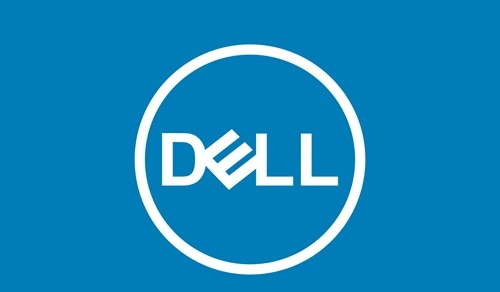Founded in 1984 by Michael Dell, Dell Technologies has grown into one of the world’s largest and most recognized companies in the technology industry. Dell provides a wide range of products and services, including personal computers, data storage, servers, networking devices, and IT services. Over the years, Dell has successfully transitioned from being primarily a hardware manufacturer to a more diversified technology company that focuses on integrated solutions, cloud computing, and services. However, in 2024, the company faces both opportunities and challenges as the technology landscape evolves.

Current Overview of Dell
Dell continues to be a key player in the global technology market. The company has maintained its position as one of the leading manufacturers of personal computers and servers, commanding a significant share of the enterprise IT market. Dell’s direct sales model and strong supply chain management have allowed it to maintain efficiency in its operations. The company’s business units—Client Solutions, Infrastructure Solutions, and VMware—drive its growth. Dell is also focusing on emerging technologies such as cloud computing, AI, and edge computing, which provide promising opportunities for future growth.
Despite these strengths, Dell faces challenges such as slowing PC demand, stiff competition from rivals like HP, Lenovo, and Apple, and the need for greater innovation in an industry that is rapidly advancing.
Strengths
1. Global Brand Recognition: Dell enjoys a strong global presence and brand equity. Its name is synonymous with quality and reliability in the technology sector. This recognition allows Dell to maintain a competitive edge in multiple regions and across customer segments.
2. Diverse Product Portfolio: Dell’s wide array of products—ranging from personal computers to enterprise solutions like data storage, servers, and networking devices—makes it a one-stop solution for technology needs. This diversification reduces dependency on any single product line, enabling the company to weather fluctuations in market demand.
3. Direct Sales Model: Dell’s direct-to-consumer model allows the company to reduce intermediaries and provide tailored solutions to individual customers and businesses. This strategy has contributed to higher margins and faster response times to market changes.
4. Innovation and Acquisitions: Dell’s acquisitions, such as the landmark purchase of EMC, have allowed the company to expand its enterprise solutions, particularly in data storage and cloud computing. Dell is also investing heavily in emerging technologies such as AI, edge computing, and IoT.
Weaknesses
1. Heavy Reliance on the PC Market: A significant portion of Dell’s revenue still comes from personal computers, a segment that has experienced slow growth in recent years. As the global PC market matures and demand declines, this over-reliance could hinder Dell’s long-term growth prospects.
2. Low R&D Spending: Compared to some of its major competitors, Dell’s research and development expenditures as a percentage of revenue have lagged behind, limiting its ability to rapidly innovate and stay ahead of emerging technologies.
3. Weakness in Mobile Market: While Dell is a leader in PCs and enterprise solutions, it has struggled to make inroads into the mobile market, particularly in areas like smartphones and tablets, where competitors like Apple and Samsung dominate.
4. Complex Organizational Structure: Following its acquisition of EMC, Dell’s corporate structure has become more complex, which can lead to slower decision-making processes and difficulties in efficiently integrating new acquisitions.
Opportunities
1. Growth in Cloud Computing and Data Centers: The global shift toward cloud computing presents Dell with a significant opportunity. With its expertise in servers, storage, and networking, Dell is well-positioned to capture a share of the growing data center and cloud infrastructure market
2. Expansion in Emerging Markets: Dell can further tap into emerging markets in Asia, Latin America, and Africa, where technology adoption is rapidly growing. These markets offer new customer segments and higher growth potential compared to saturated Western markets.
3. AI and Edge Computing: The rise of AI and edge computing presents a lucrative growth area for Dell. By developing solutions for industries that require real-time data processing, such as healthcare and manufacturing, Dell can stay at the forefront of this technological wave.
4. 5G and IoT Solutions: With the global rollout of 5G, Dell has the opportunity to provide enhanced services and products that leverage faster internet speeds. This includes developing solutions for smart cities, autonomous vehicles, and connected devices.
Threats
1. Intense Competition: Dell faces fierce competition from global tech giants such as HP, Lenovo, Apple, and Microsoft. These companies are constantly innovating, which places pressure on Dell to differentiate itself and maintain market share.
2. Shrinking PC Market: The decline in global PC shipments is a significant threat to Dell, given that a large portion of its revenue still comes from this segment. Continued contraction in the PC market will require Dell to diversify more aggressively.
3. Supply Chain Disruptions: Dell relies on a global supply chain, making it vulnerable to disruptions caused by geopolitical tensions, natural disasters, or material shortages. Supply chain issues could affect the company’s ability to deliver products on time, impacting customer satisfaction.
4. Cybersecurity Threats: As cybersecurity becomes a growing concern across industries, Dell must ensure that its products and services are secure. Any breaches or security failures could damage the company’s reputation and customer trust.
Future Plans
Looking ahead, Dell is focusing on growing its enterprise solutions business, particularly in cloud computing, AI, and edge computing. The company plans to continue expanding its presence in emerging markets, where technology infrastructure is developing rapidly. Additionally, Dell is investing in strengthening its cybersecurity offerings and sustainability initiatives. The company’s strategic acquisitions and partnerships in the cloud, data analytics, and cybersecurity sectors are expected to drive future growth.
Conclusion
Dell remains a global leader in technology, with strengths in its diversified product portfolio, strong brand recognition, and a customer-centric direct sales model. However, challenges such as declining PC demand, competition, and supply chain vulnerabilities pose risks to the company’s future. By focusing on high-growth areas such as cloud computing, AI, edge computing, and expanding its presence in emerging markets, Dell is well-positioned to continue innovating and growing in the rapidly evolving technology landscape.